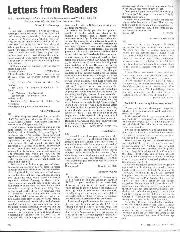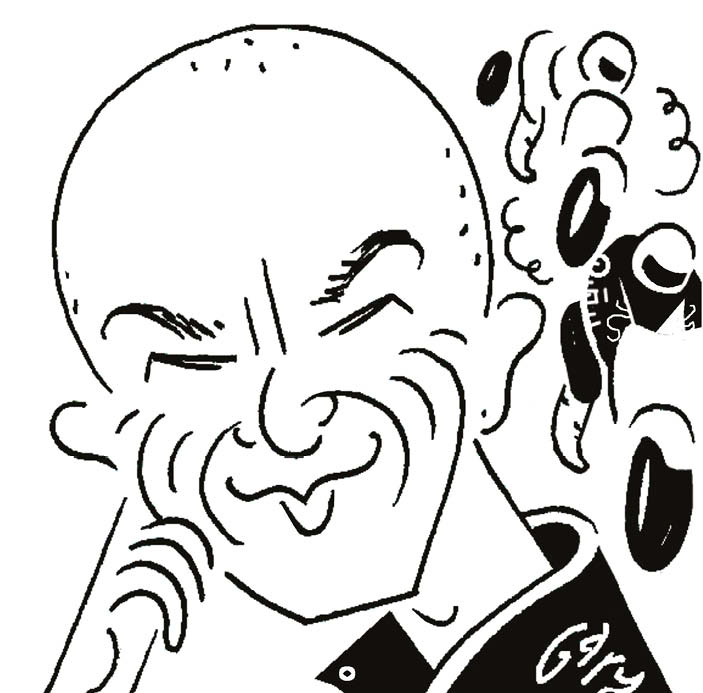
Good service
Sir, I should like to draw your attention to the service provided by Thos Richfield & Son Ltd, 8 Broadstone Place, London. I recently wanted a new tachometer cable for…

MotoGP pre-season testing commences at Sepang, Malaysia, on February 6. The 2019 season, which marks the 70th birthday of world championship grand prix racing, is likely to be every bit as frantic as the last few campaigns, during which Honda and Ducati assumed the technical advantage.
Honda and Ducati left their rivals behind because they adapted better to MotoGP’s biggest regulations change since the big four-strokes replaced the 500cc two-strokes in 2002. Following the 2016 switch to unified software and Michelin tyres, the bikes have become more challenging to engineer and to ride than at any time since the fiery 500s.
Corner-entry performance is hard to find because the Michelin front tyre isn’t as good as the previous Bridgestone front, while corner-exit performance is similarly elusive because the unified traction-control software is purposefully less effective than the tailor-made factory alternative it replaced. This is why half MotoGP’s lap records stand from 2015 or earlier, before the new technical rules were introduced.
If this sounds like a bad thing, it isn’t. All motor sport is largely about technical challenges – either solving them in the garage or riding around them on the racetrack – so the bigger the obstacle, the better it is for the more talented engineers and riders.
“I enjoy it when the challenge is more complex,” says Gigi Dall’Igna, chief engineer at Ducati Corse. “It’s also better for increasing our knowledge, because we are always pushing to try to understand things better.”
World champion Marc Márquez feels the same, especially about the lower-tech software, made for MotoGP rights-holder Dorna by Magneti Marelli. “Less electronics is better, because then everything is more in your hand, in your body,” he says.
Honda and Ducati have engineered their motorcycles to enter and exit corners as effectively as possible, despite these problems, so now the big deal is focusing on the middle phase of the corner to improve lap times. If they can make the motorcycle turn more quickly in this area, then the rider can be even faster, while asking less of the front tyre and of the traction control.
“Chassis flex is now a very important factor in chasing lap times ”
Chassis flex is thus now a very important factor in chasing better lap times. Last year Ducati and Suzuki introduced aluminium/carbon-fibre composite frames to change the amount of flex or move the area of flex, while Honda might follow suit. Lateral flex isn’t only vital to provide suspension at full lean, when the front forks and rear shock can’t work effectively, but also to provide a self-turning effect. This makes the bike corner better, while also stressing the front and rear tyres less, because the bike turns more naturally and the rider needs less wheelspin to finish the corner. Thus flex is as big a factor in the turning conundrum as geometry and centre of mass.
“It’s black magic!” says Paul Trevathan, crew chief to Pol Espargaró at Red Bull KTM. “You have to take the load off the front tyre and start the process of getting the bike around the corner and rotating the load to the rear, because motorcycles don’t turn from the front, they turn from the rear. This process of finding the right rear grip is the key, because the sooner you can do that, the sooner you can finish the corner and get onto the good [fatter] part of the tyre and then go. The more flexible you are in this area is key to tyre life. We see on the data that from 50deg of lean to 35deg of lean the difference in tyre performance is unbelievable, so you need to get into that better area and the quicker you can get there, the sooner you can use more throttle.”
Once the right amount of flex has helped the rider turn – so he can lift the bike onto the fatter part of the rear tyre – he needs a nice, friendly engine that will find traction without relying too much on the electronics.
“You are always looking for rideability from the engine,” adds Trevathan, “because the less the engine and electronics fight each other the smoother the whole corner-exit process will be. My belief with the Michelin rear is that you can’t shock it into catching grip. You have to constantly load it. For example, if the traction control makes an ignition cut, then all of a sudden you’ve taken load off the rear tyre, so the bike goes into a state of nothing, then the load comes back as a shock and the tyre loses grip. If you have a good engine – a good, smooth heart to the motorcycle – it makes everything easier.”
Austrian factory KTM, which entered the premier-class in 2016, decades after its rivals, has a lot of catching up to do. That task might be eased by the completion of MotoGP’s unified electronics system, with the 2019 introduction of a unified Inertial Measurement Unit (IMU).
Most electronics engineers believe factory teams had been using their own IMUs to get more performance from the unified software, but no one admitted it and no one accused anyone else of doing such things. Not surprisingly, the faster factories don’t think the control IMU will make much difference, while the slower factories hope it will help them to close the gap. Only time will tell…
Mat Oxley has covered motorcycle racing for many years – and also has the distinction of being an Isle of Man TT winner
Follow Mat on Twitter @matoxley